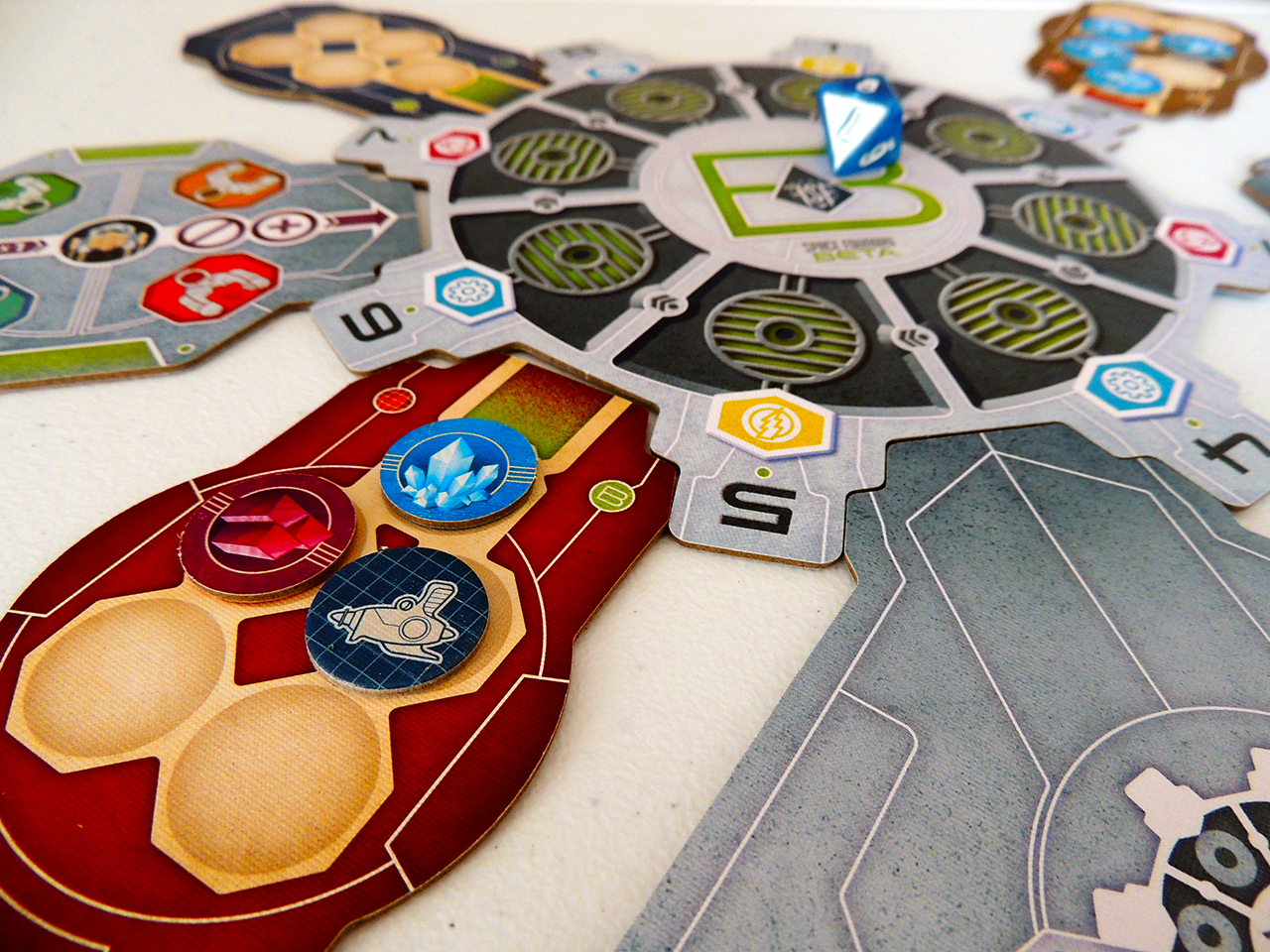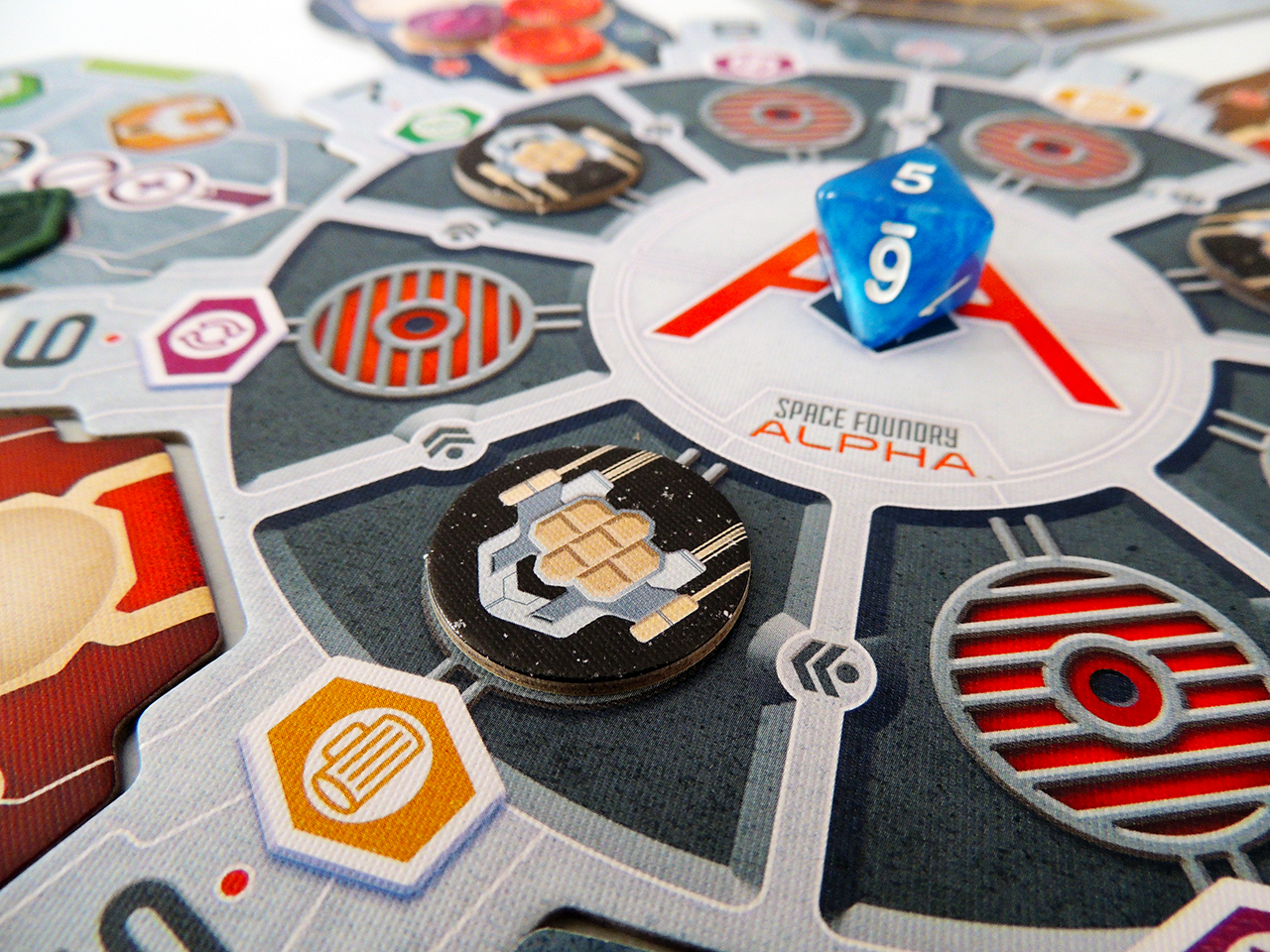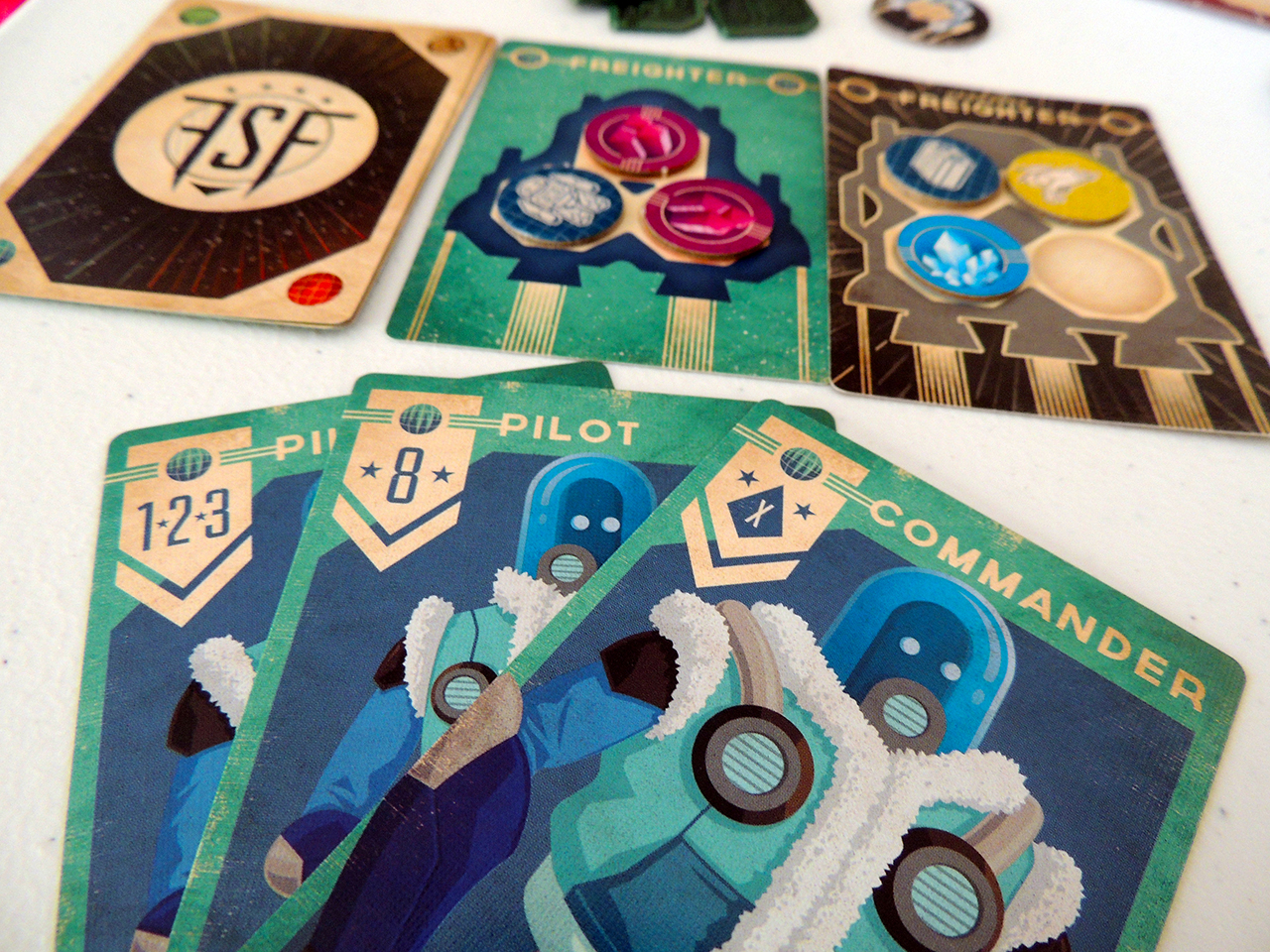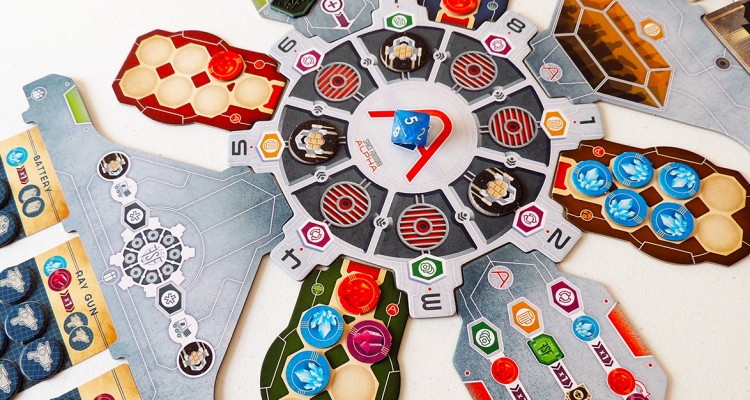Come in, Far Space Foundry Alpha, this is ship Tango-Romeo-One-Six-Niner. Looking to offload our current shipment of skyrite. Requesting to dock in bay number three.”
“Copy ship TR169, this is Dockmaster Bluefin, you are clear to land in docking bay three… no wait, four… five… yes, five is open, copy.”
“Sigh. Was really looking forward to hitting the cantina, Dockmaster. We’ll gather more supplies and offload at bay five. Out.”
With a swipe across his sweaty brow, the dockmaster switched comms, flipping the toggle for bay eight with the angry growl of feedback echoing across the empty bay. “Dock eight, you are clear for departure. Bay eight. Bay eight, do you copy?” Yet, only silence answered his increasingly desperate hails.
Grunting, he switched channels between bay eight, seven, and finally six before finding someone milling about, giving the go-ahead for ship ZB1723 to depart with its cargo for transport to Foundry Beta. As he again wiped the sweat from his brow and tried to collect his thoughts, he shook his head. Those late nights at the Foundry cantina were really going to cost him his job if this kept up.
Interrupting his musings, there came a sudden, loud knock on the office door. With a resigned sigh, the dockmaster got up from his console to check the security screen. Scowling at the view, he stabbed one of the two buttons, sliding the door open to reveal a very tall human (alien?, robot?) dressed all in blue, and outfitted as if for an expedition on one of those cold, lonely moons in the Beta sector. “Dockmaster Bluefin, “ the figure began, with an unusual cadence to the words. “I am happy it is you whom I am seeing here. I am in need to have one of my ships land in docking bay five, but occupied it is now. Am I correct in that this credit should persuade you to have them at once depart?”
The offered coin in the thin, inhuman hand shone with a hypnotizing glow in the dim lighting of the dockmasters office, and before he knew it, he found himself reaching for the credit without speaking. The alien gave an enigmatic nod in return, and departed, leaving him only with his shiny new credit and his thoughts.
That ship in bay five just put in… the Captain is going to kill me… but one more night in the Cantina won’t hurt I guess…
The dockmaster returned to his console, looking over the current situation with the realization that he really needs a new job…

FEDERATION IS UNITY
Far Space Foundry (FSF) by Dan Manfredini and Terra Nova Games, offers a unique and puzzling experience that combines familiar mechanics with high quality components and the always fantastic artwork from Adam McIver and his Cre8tive Dept.
In FSF, you assume the lead role of a mining and processing organization. Using a small deck-building formula, you will utilize pilots and a modest fleet of freighters to deliver items to and from the Alpha and Beta Foundries. Raw materials, such as blue skyrite and red rubion, are delivered from the local asteroids to Foundry Alpha; then these mined materials are shipped off to Foundry Beta for processing and product manufacturing. Those products will be loaded back onto your freighters to be shipped off to the galactic consumers and, more importantly, score you victory points at the end of the game. In deciding how to manage your limited opportunities to mine, refine, and shuttle these materials, FSF offers a perplexing puzzle. From the solo variant to the full four player count, you will find yourself regularly thinking on your toes to find the most optimal move given a crowded and competitive docking bay.
The game begins at Foundry Alpha, with players traveling to Foundry Beta during the latter half of the game. A random selection of products are selected at the beginning of each game, allowing players to plan ahead as to what minerals they’ll need for the second phase, while the deck of neutral pilots and their ships are made available at the cantina. The docking bays that surround both foundries will serve as the central rondel mechanic, with certain actions available depending on where you dock and depart from on your turn.
You’ll begin with a hand of three pilots, and start the game with very slim deck of cards. Each of these pilots are assigned to a specific docking bay, and may only attempt to land or depart from that bay in particular. The exception are your Commanders, which are a bit of a wild card. They either allow you to use the value currently showing on the die, or to take your chances and reroll it for their assigned bay. The neutral pilots that you may recruit to your deck function in the same way, as well as providing a unique skill of their own during the process. As you land and leave the Foundries, specific bays offer different actions in addition to the transportation of goods and resources..
The entire game revolves around this docking-bay rondel, and your choice to dock and add a ship to an empty bay or depart and remove one of the already placed ships. When docking at Foundry Alpha, you may gather resources from any one asteroid for delivery to your storage area, while departing allows you to load items from your warehouse to any one of your waiting freighters. The capacity of your arriving or departing ship is determined by the number of bays you “try”. For example, if you wanted to land a ship at bay number six but it is occupied, you’ll try the next one. If that one is full, too, then you keep moving clockwise until an empty bay is found. The number of bays that were attempted determines the current number of items that you can deliver. Departing the foundry works the same except in reverse, IE: if the chosen bay is empty, keep checking around the station until you find a bay with an available ship. After every player has run through all of their pilots, the foundry board flips to Foundry Beta and the second phase of the game will begin. With freshly-shuffled decks, play resumes until all pilots are exhausted once more, ending the game.

In Foundry Alpha, you have actions available to you that will help earn money, allow you to hire a new pilot and their freighter from the cantina, or process the rubion that you have gathered to the even more valuable galactium. As you progress through Foundry Alpha, you will need to keep the mid-game switch to Foundry Beta in the back of your mind and as part of your strategy, as Foundry Beta offers actions that rely directly on what you were able to achieve back at Alpha. For example, here you can manufacture goods, power them up for extra points, and perform maintenance on your freighters.
The trick to success in all of this is maximizing the efficiency of your currently available actions.
Coupling the timing of these actions with an optimal transportation capacity, while working around the available pilots in your hand, is where your brain can start to knot up. Luckily, the Dockmaster isn’t above taking a bribe to clear out a much-needed docking bay, or fill in an empty spot in a pinch.
At the end of the game, there are a number of ways to both gain (and lose!) points. Each of the goods loaded onto your freighters are worth the points listed on their card, while ones that you took the time to ‘charge’ get a bonus-point premium. Additionally, a diversity of products is rewarded, as is any spare change that you have tucked away. Unfortunately, any freighter that you haven’t completely filled is worth a negative, as is any freighter that you didn’t maintain at Foundry Beta. The player with the most points is declared the winner!
FEDERATION IS PEACE
I was a proud backer of Far Space Foundry on Kickstarter after taking on the massive task of piecing together the print-and-play version one snowy day; the theme and the style of the artwork really drew me in. After a few hours of cutting and pasting, my first play was almost like working out a brain teaser. I really enjoy the puzzle aspect that the game offers. The changing rondel and available actions was a satisfying puzzle to work through, what with trying to figure out which of the three cards you currently hold will allow you to obtain the best transport capacity while taking the action you really want. At times however, this can leave you frustratingly stuck with a very pointless move due to the limitations of your draw or the current game state on your turn. Still, FSF seems to play equally well with any player count. A two player game can feel like a race at times, while a four player game, as well as the solo variant, can have you scratching your head on how to make the best move.

In all of my plays, I have often found that things seem to hinge on the cantina action at Foundry Alpha. The cantina allows you to gain more pilots to add to your deck (which means extra actions, and also special abilities to aid you in future turns). These pilots also allow you to pick up an extra freighter, giving additional space and options when it comes to transportation. The only downside is needing to fill and maintain them by the end to avoid the negative scoring. Money is VERY tight, so having that one credit to hire a pilot can be huge. On the other hand having that same credit to bribe the dockmaster can make or break some strategies. Additional neutral pilot cards, (from a Kickstarter stretch goal), are a great addition to help you with these actions. The Mercenary, for example, allows you to take the bribe action for free even if you have already used a bribe at this particular Foundry.
The League as a whole seems to be split on where they stand with FSF (You can see for yourself in the rulings below). I am a strong advocate on trying it out at least twice, as any first timer seems to always struggle on how to piece it all together. The moment the board flips to Foundry Beta, you can see the brain-bulbs flicker a little brighter as it all clicks. Since I backed FSF on Kickstarter, I also own the ‘Ether Ore’ expansion, which we have yet to play, but look forward to see what it offers. I did add in the extra pilots when I played my solo game and I think they really add value to the spectrum of available pilots and actions they offer. I am a big fan of FSF and recommend that the seasoned gamer try it at least twice before passing judgement, but I know for a fact that this game is definitely not for everyone.
[su_custom_gallery source=”media: 13095,13094,13100″ limit=”3″ link=”lightbox” target=”blank” width=”220″ height=”220″ title=”never”]
League Ruling
Matt
My first play of Far Space Foundry went exactly as Steve describes above – I didn’t quite get how it was all going to work until that Foundry B board came out. It was then that I realized I had completely botched my play. The troubling piece of Far Space Foundry is how closely linked your performance in the first half of the game is to your success in the end game. The only materials and money you have to work with at Foundry B are those gathered and successfully shipped from Foundry A, making the first cycle through your deck paramount. Much of your time at Foundry B is actually spent by rote, as you simply need to move the materials, convert them quickly, and stick the newly produced goods back on your ship before time runs out. This game is not the first efficiency puzzle with a tight economy that I’ve encountered, but it’s easily the most in-your-face. Don’t be surprised while playing to have a player say, very accurately, “I can’t win.” There is a point in the game where you can actually calculate whether it’s even possible to outscore an opponent.
Now this gritty reality aside, I actually enjoy Far Space Foundry for these same reasons. Fitting nicely in a 45 minute play slot, the game gives you meaningful decisions most of the time and challenges you to play again and improve your formula. I found it best at 2-players, as it provides the most freedom and predictability in the ever-changing rondel. As the player count increases, things get exponentially more chaotic, and you may even find yourself with dead cards in your hand. The sour taste of wasted turns in such a tight game isn’t one you want to be on the receiving end of and is a definite weakness of the title.
Overall, I’m happy with Far Space Foundry. It has its issues, primarily with the potential for a complete breakdown of its core system, but for whatever reason I forgive the game for this. It’s quick enough and there are enough things to focus on that it’s not too offensive, but it’s still a far from perfect design.
Dan
There was a lot to like when this game was described to me: resource conversion, a tight economy, and a rondel action mechanism – all things that I typically love in an euro-style game. Yet, this game fell entirely flat for me; the main culprit being the action selection mechanism. Each turn you are trying to maximize your efficiency and optimize your move based on the three cards in your hand. I thought the rondel itself and the puzzle it presented were interesting, but using the randomly drawn hand of cards to drive it was where it lost me. There were a number of times, throughout each game, when the cards in my hand were sub-optimal, borderline useless, which in such a tight game, was extremely frustrating. More often than not it boiled down to a “best choice” tactical exercise which often derailed any semblance of strategy I tried to assemble. I did enjoy the 2-player experience much more than the 4-player experience as it was less muddled and more strategic, aligning more to my preferred play-style.
As mentioned, the game is split into two halves, and I’ve found that you can almost always calculate your chances of winning as soon as that board flips. In each game, there was a clear winner going into the second half making it feel like an exercise in futility if you were behind. While I don’t necessarily subscribe to the philosophy that a game should always provide a feeling that you’re in it until the end, this is something to keep in mind for anyone that may be bothered by this. To its credit, the game moves along rather quickly so the feeling is thankfully short-lived.
I love the art style in this game. Adam McIver continues to deliver time and again and Far Space Foundry is no exception. I am still not sure why the board is modular, and not just a single game board, but that is a small aesthetic gripe that I can certainly live with.
While I can certainly understand the reasons my colleagues enjoy this game – short play-time, unique mechanisms, and beautiful art – overall, I found the sum of its parts to be more a tedious exercise than an enjoyable game experience. I’ll play it if it’s put on the table but the request won’t come from me.









